Removing Rust from Knives and Proper Knife Blade Maintenance
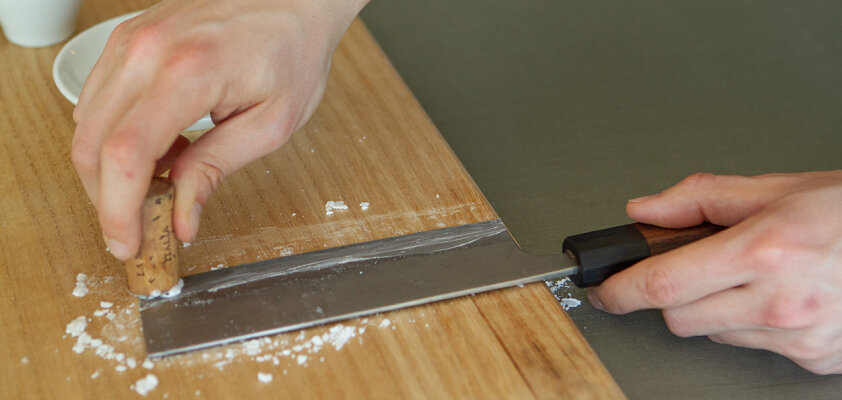
High-quality Japanese kitchen knives have long found their fan base in Europe. Japanese knives are increasingly making their way not only into professional gourmet kitchens but also into private households. Japanese chef's knives, especially hand-forged knives made of carbon steel, have their own character that differs significantly from most kitchen knives produced in Europe.
Cause of rust and reddish discoloration on the blade
European manufacturers of kitchen knives focus a lot on aspects such as dishwasher use, corrosion resistance, break resistance, etc., making compromises in terms of sharpness, cutting performance, ease of use, and gentle cuts. However, even the use of stainless steel does not always protect against potential discoloration and rust. Rust can develop when metals like iron combine with oxygen and water. Iron particles detach and deposit as rust on knife blades. Those who clean their cutlery in the dishwasher expose it to a combination of high temperature, dishwasher tablet salt, water, and the dishwasher's aluminum. This can result in rust or a reddish discoloration on the cutlery after the washing process.
Prevention of possible knife rust
Japanese kitchen knives have different priorities. With few exceptions, such as the Deba knife, they are more or less uncompromisingly focused on effortless, fine cuts of soft food. Craftsmanship often emphasizes the potential sharpness, so sharpness potential is a top priority. The carbon steel used is much harder but also more brittle, the blades are forged much thinner, and the cutting edge can be ground extremely finely. So, the angle between the cutting edge and the back of the knife is only about half as large as in typical European kitchen knives.
Rust is a concern with Japanese kitchen knives. Depending on the steel used, the knife blades are more or less sensitive. Most knife steels, including some stainless steels, do not meet European standards for "stainless." However, whether rust actually forms on the knife blade also depends on how the knife is used and cared for. It makes sense to ask yourself beforehand whether you are willing to give the knife enough attention and possibly remove rust from it. A basic rule is to clean sensitive knives immediately after use and thoroughly dry them. It may also be useful to protect the blade afterwards with oil, preferably camellia oil, to prevent corrosion. Japanese stainless steels, although they may not be labeled as stainless in Europe, rarely tend to rust and forgive a somewhat more neglectful approach to moisture and cleaning. Discoloration of the steel, usually in the cutting edge area, can also occur with Japanese knife steels. The steel types Shirogami (white paper steel) and Aogami (blue paper steel) are particularly known for this phenomenon, but it can occur with any carbon steel. The main cause of discoloration is usually the natural acidity of the foods you have cut.
A tip on how to quickly remove unsightly, fresh rust stains with a tried and tested home remedy.
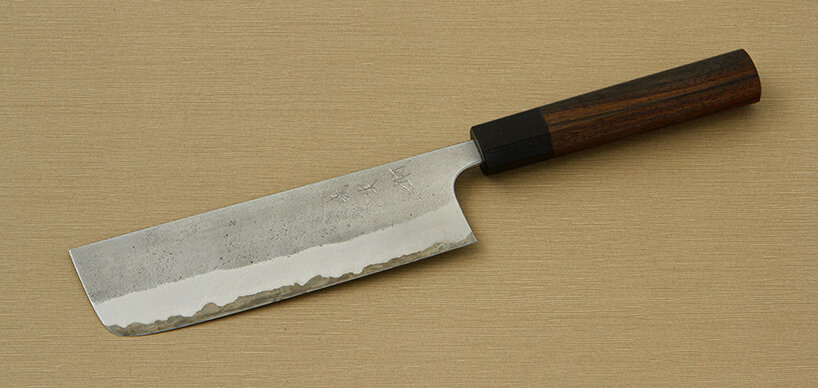
Fill baking powder and baking soda in a ratio of 2:1 into a small bowl and mix everything well.
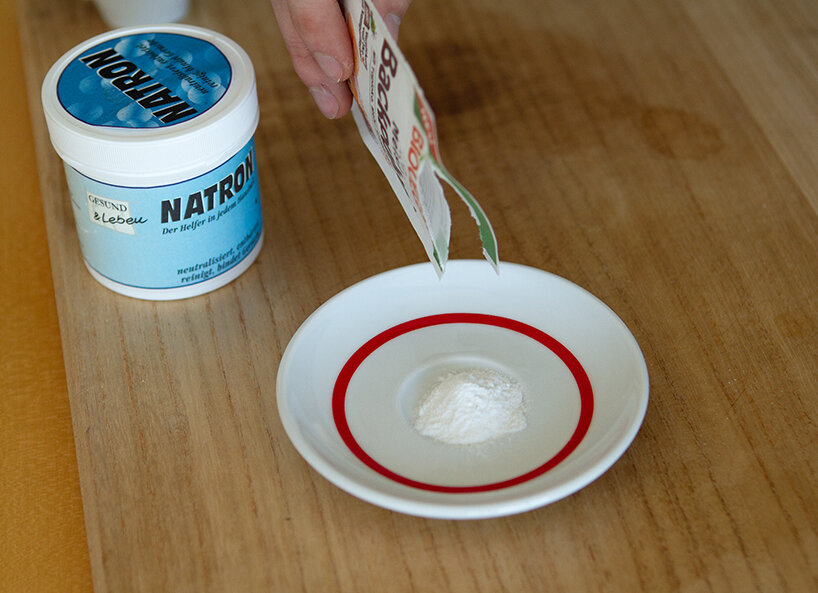
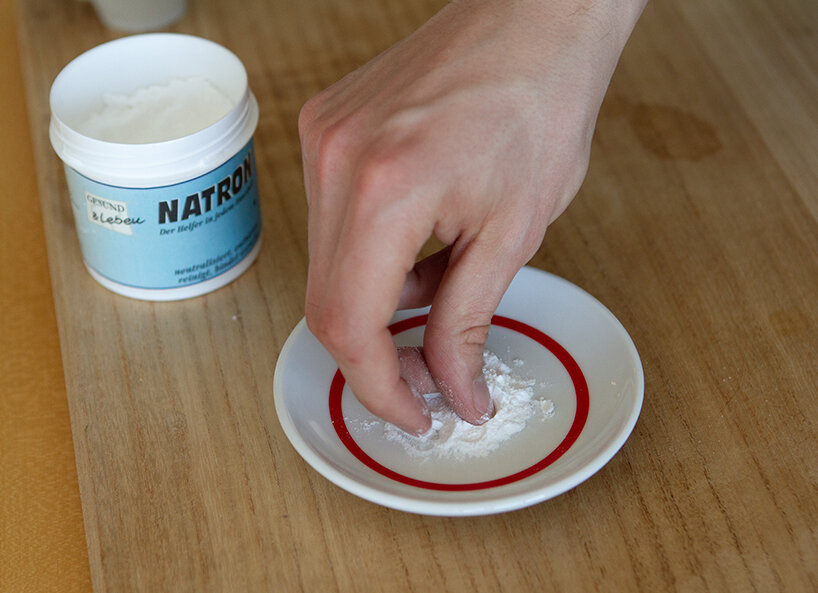
Moisten the rounded end of a cork with water and use it to pick up the baking powder and baking soda mixture. This way, the baking powder and baking soda mixture can be easily applied to the affected areas of the blade for cleaning.
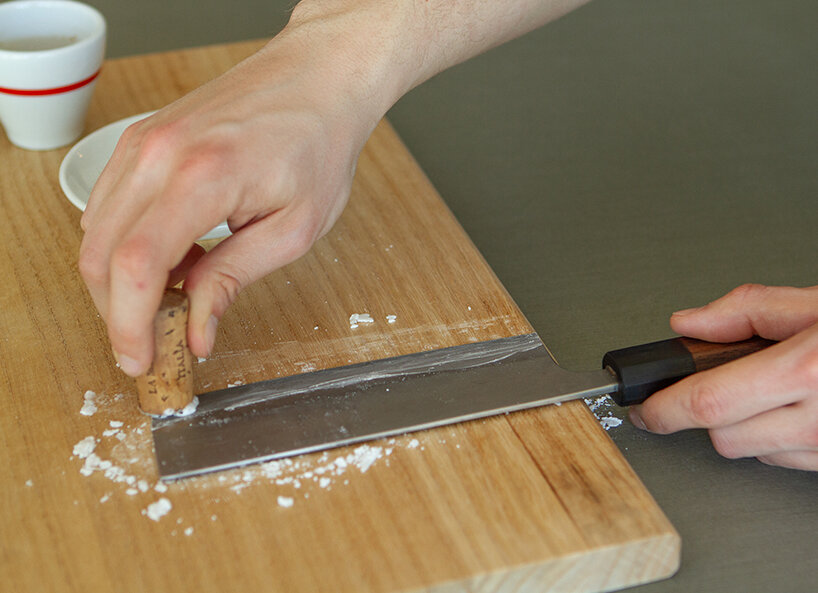
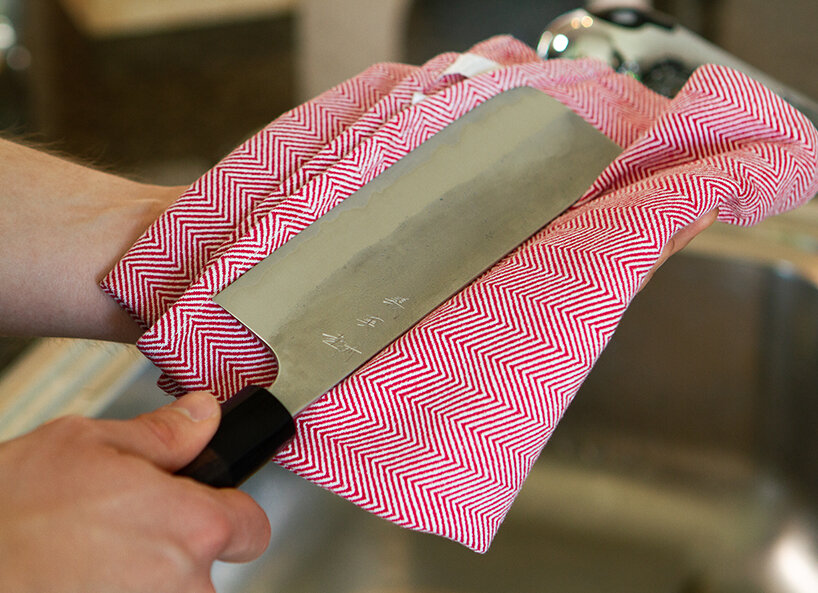
Important: Place the knife on a surface in a way that allows the blade to be cleaned safely without bending it. Work with caution and avoid any uncontrolled slipping, as this can quickly lead to injuries, especially with sharp Japanese knives. After the rusty areas have been removed with the solution, clean the blade under running water. Then, dry the knife with a clean cloth - done.
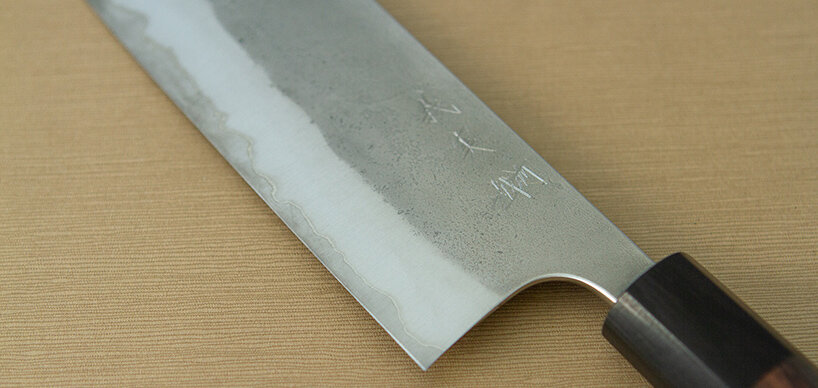
To provide additional protection against rust, you can rub the blade with 2-3 drops of knife oil. Camellia oil is very suitable for this purpose, as it is odorless, does not tend to oxidize, and has no negative impact on food.
Another option to remove fresh rust from knife blades is to use a rust eraser. Since this is coarser than the household remedy, it is faster, but there is also the risk of leaving abrasion marks on sensitive surfaces.

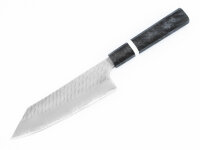
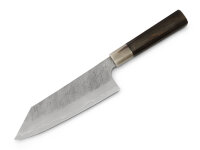
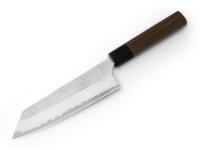
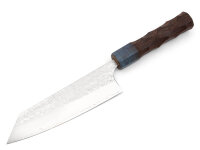
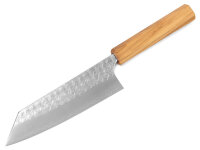
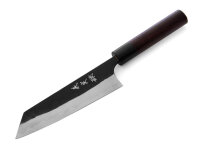
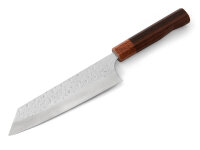
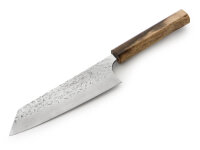
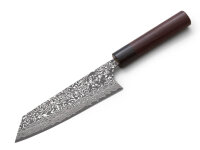
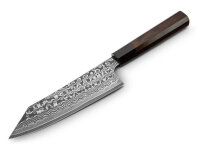
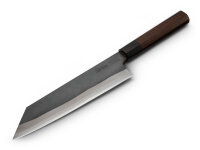










-from-the-yakiyaki-grill-pan.jpg)




